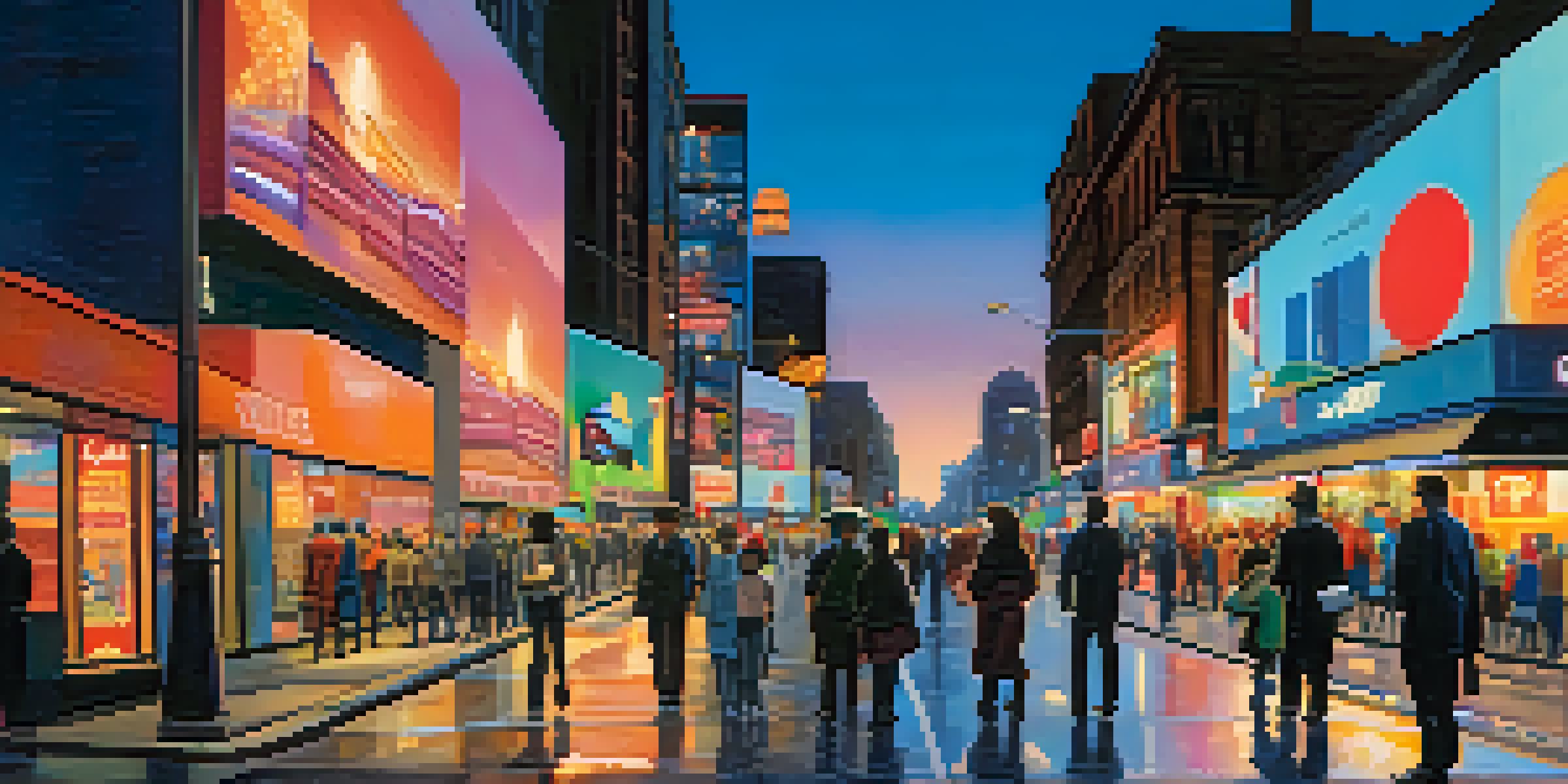The Power of Imagery: How Visuals Affect Viewer Emotions

Understanding the Importance of Visuals in Communication
In a world inundated with information, visuals serve as a beacon, guiding our understanding and emotional response. They capture attention quickly, making complex ideas more digestible. Think of a busy street; a striking billboard grabs your eye amidst the chaos, conveying a message faster than words alone could.
A picture is worth a thousand words.
Research shows that the human brain processes images 60,000 times faster than text. This staggering statistic highlights why visuals are essential in effective communication. By harnessing the power of imagery, brands can create memorable experiences that resonate with their audience.
Visuals evoke emotions, from joy to nostalgia, shaping how we perceive messages. A well-chosen image can stir feelings that words sometimes fail to convey, making it a powerful tool in storytelling. Thus, understanding this power is crucial for anyone looking to connect with their audience meaningfully.
The Emotional Impact of Color in Visuals
Colors aren't just pretty; they evoke specific emotions and associations. For instance, blue often conveys calmness and trust, while red can evoke excitement or urgency. This emotional response to color is a fundamental principle in design and branding.

Consider a brand's logo: the colors chosen can significantly influence consumer perception. A warm palette might suggest friendliness, while cool tones could imply professionalism. This strategic use of color helps brands communicate their core values without saying a word.
Visuals Enhance Emotional Connection
Effective visuals can evoke emotions and create a meaningful connection between brands and their audience.
By understanding the psychology of color, marketers can craft visuals that not only attract attention but also resonate emotionally with their audience. This emotional connection can lead to increased engagement, loyalty, and ultimately, conversion. Such is the power of color in imagery.
The Role of Imagery in Storytelling
Imagery is a fundamental aspect of storytelling, acting as a bridge between the narrative and the audience's emotions. A captivating image can encapsulate the essence of a story, drawing viewers in and making them feel part of the journey. Think about a movie poster: a single image can evoke excitement, curiosity, or even nostalgia.
Color is the keyboard, the eyes are the harmonies, the soul is the piano with many strings.
Visuals enhance narratives by providing context and depth. They can illustrate a character's emotion or set the mood of a scene, allowing viewers to connect on a deeper level. This connection transforms a simple story into an emotional experience.
As stories unfold, the imagery accompanying them can reinforce themes and messages. By strategically using visuals, storytellers can guide the audience’s emotional journey, ensuring that the impact of the narrative lingers long after the story is told.
How Visuals Influence Decision Making
Our decisions are often swayed by the visuals we encounter. Whether shopping online or browsing social media, attractive images can drive choices and even impulse buys. For example, a beautifully presented dish in a restaurant menu can make your mouth water, leading to a quick decision.
Research indicates that 93% of consumers prioritize visual appearance over other factors when deciding on a product. This statistic underscores the importance of high-quality imagery in marketing. By showcasing products in an appealing light, brands can significantly enhance their chances of conversion.
Color Influences Perception
The strategic use of color in visuals can significantly impact consumer perception and emotional responses.
Moreover, visuals help simplify choices. Infographics, for instance, can break down complex data into digestible pieces, making it easier for consumers to understand their options. This simplification leads to more informed decisions, highlighting the interplay between visuals and consumer behavior.
The Power of Authenticity in Visuals
In an age of filtered images and staged photos, authenticity has emerged as a key driver of emotional connection. Users are drawn to real, relatable visuals that reflect genuine experiences. Think of influencer marketing: the most successful campaigns feature authentic imagery that resonates with audiences.
Authentic visuals foster trust and relatability, making consumers feel seen and understood. Brands that showcase real customers and unpolished moments are often more successful in building emotional bonds. This connection can lead to brand loyalty and advocacy.
Furthermore, authenticity in imagery can differentiate a brand in a crowded market. As consumers become savvier, they gravitate towards brands that prioritize honesty over perfection. This shift highlights the power of authenticity in creating meaningful emotional connections.
The Impact of Social Media on Visual Consumption
Social media platforms have transformed how we consume and share visuals, amplifying their emotional impact. Platforms like Instagram and Pinterest prioritize imagery, making them vital for brands aiming to connect with their audience. A single scroll can evoke a myriad of emotions, from joy to inspiration.
User-generated content has also reshaped the landscape. Consumers now share their experiences through visuals, adding a layer of authenticity that resonates with others. This organic sharing creates a community where emotions are amplified through shared experiences.
Authenticity Drives Brand Loyalty
Authentic visuals resonate with consumers, fostering trust and loyalty in a crowded market.
As brands navigate this visual-centric world, they must adapt their strategies to leverage social media effectively. Engaging visuals that evoke emotions can drive shares, likes, and ultimately, brand awareness, showcasing the power of imagery in the digital age.
The Future of Visual Communication
As technology evolves, so does the potential of visuals in communication. Virtual reality (VR) and augmented reality (AR) are on the rise, offering immersive experiences that evoke powerful emotions. Imagine stepping into a virtual world where you can experience a brand's story firsthand.
These advancements allow brands to create deeper emotional connections with their audience. By engaging multiple senses, VR and AR can transform passive viewers into active participants, heightening the emotional impact of imagery. This evolution signifies a shift in how we interact with visuals.

Looking ahead, the importance of effective visual communication will only grow. As brands strive to connect with increasingly discerning audiences, harnessing the power of imagery will be paramount. The future holds exciting possibilities for those willing to embrace this visual revolution.